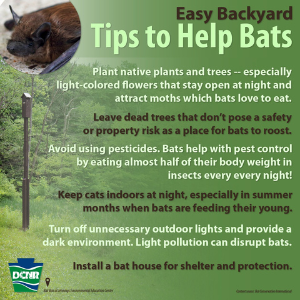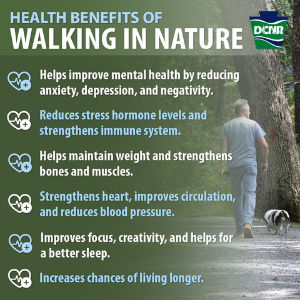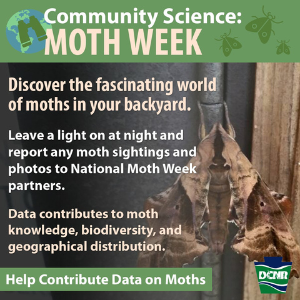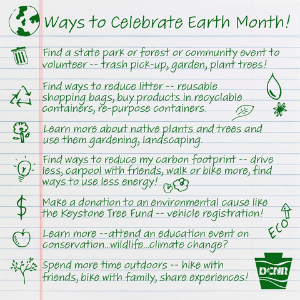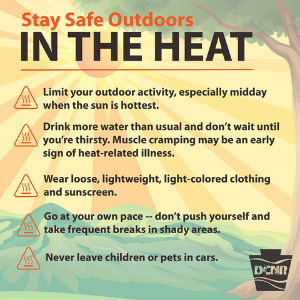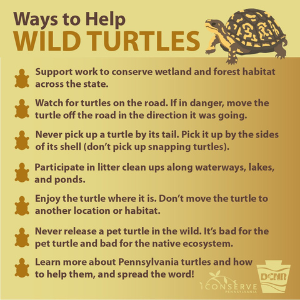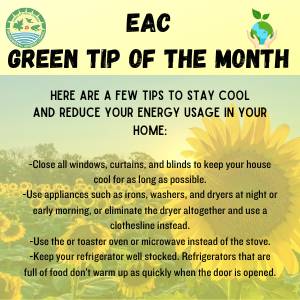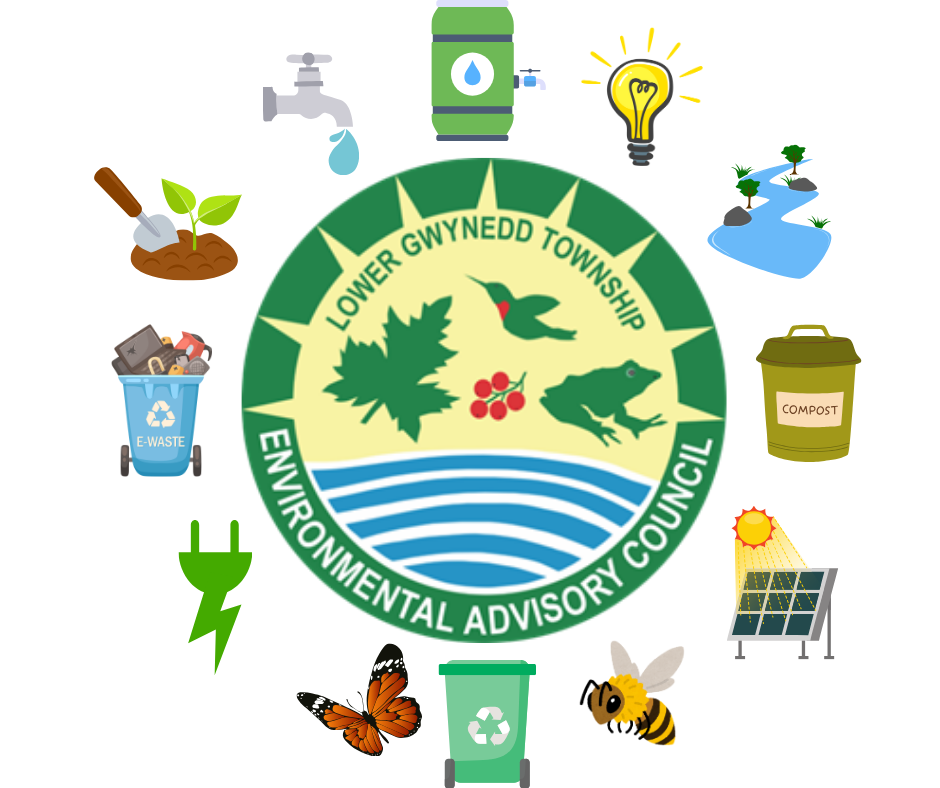
Mission Statement
The members of The Environmental Advisory Council (EAC) are volunteers appointed by the Board of Supervisors who research and advise the Board on environment-related concerns and initiatives, working with township staff and other township boards and committees to achieve our mission: to educate, facilitate and promote sustainable practices within the township and the greater community through educational workshops and programs, articles and community events.
Council Members for 2024 are:
- Mark Schafer, Chair
- Rea Monaghan, Vice Chair
- Karleigh Burns
- Marianne Grey
- Maureen Nunn
- Brenda Doll
- Robert Sawyer
Associate members for 2024 are:
- Richard Valiga
- Suzanne Smith-Oscilowsk
- Steve Saffier
- Lisa Brown
The Environmental Advisory Council Meets the 2nd Wednesday of the month at the Township Building at 7:00 p.m. Virtual viewing option is also available.
Current Program Development
The mission of The Lower Gwynedd Township EAC includes education, facilitation and promotion of sustainable practices within the Township and the greater community. To this end, we have organized our activities into several broad categories, with subcommittees focused on particular issues within each category.
Land Stewardship: promote diverse habitat and healthy trees, soils, and woodlands
Water Stewardship: promote conservation of water, reduce runoff, and promote clean, healthy waterways
Resource Conservation: reduce waste and promote a smaller carbon footprint
Communication and Community Outreach
Upcoming Main Calendar Events
Next Scheduled Meeting
| Meeting | Date | Agenda | Packet |
|---|---|---|---|
| Environmental Advisory Council | August 13, 20257:00 PM |
N/A | N/A |
Recent Meetings
| Date | Agenda | Packet | Minutes |
|---|---|---|---|
| December 8, 20207:00 PM | |||
| January 21, 20216:00 PM | |||
|
February 10, 20217:00 PM
Zoom Meeting Link https://us02web.zoom.us/j/89925120203?pwd=ZXR0WDBFMXZCUUNXalhoSVBtUWMzUT09 Meet… Zoom Meeting Link https://us02web.zoom.us/j/89925120203?pwd=ZXR0WDBFMXZCUUNXalhoSVBtUWMzUT09 Meeting ID: 899 2512 0203 Passcode: 153673 Read More |
|||
|
March 10, 20217:00 PM
Zoom Meeting Information https://us02web.zoom.us/j/81487707077?pwd=UXJaWVgyZFZ5RkVoSUJsdlFReXZqQT09… Zoom Meeting Information https://us02web.zoom.us/j/81487707077?pwd=UXJaWVgyZFZ5RkVoSUJsdlFReXZqQT09 Meeting ID: 814 8770 7077 Passcode: 184489 Call In #: 1-646-876-9923 Read More |
|||
|
April 14, 20217:00 PM
Zoom Meeting Login Info: https://us02web.zoom.us/j/82337496745?pwd=eVpmR3lJZWhtY05semxmZzAzZStPdz09… Zoom Meeting Login Info: https://us02web.zoom.us/j/82337496745?pwd=eVpmR3lJZWhtY05semxmZzAzZStPdz09 Meeting ID: 823 3749 6745 Passcode: 271494 Call In #: 646-876-9923 Read More |
|||
|
May 12, 20217:00 PM
Passcode: 088734 Call In #: 1-929-205-6099
|
|||
|
June 9, 20217:00 PM
Passcode: 155291 Call In# 1-646-876-9923 |
|||
|
July 14, 20217:00 PM
This is an in-person meeting. A zoom meeting link is provided below for guests by the EAC Chairman. …This is an in-person meeting. A zoom meeting link is provided below for guests by the EAC Chairman. Read More |
|||
|
August 11, 20217:00 PM
This meeting is in-person with a virtual option Meeting ID: 836 0059 7017 One tap mobil… This meeting is in-person with a virtual option Meeting ID: 836 0059 7017 One tap mobile: +12678310333,,83600597017# US (Philadelphia) Dial In #: 267-831-0333 Read More |
|||
|
September 8, 20217:00 PM
This meeting has been canceled for this month. |
|||
|
October 13, 20217:00 PM
Meeting ID: 846 8967 4014 Call IN#:267-831-0333 |
|||
|
November 10, 20217:00 PM
This meeting will be held in-person at the Township Building. The EAC is also offering a virtual vie… This meeting will be held in-person at the Township Building. The EAC is also offering a virtual viewing option through Zoom. The Zoom login information is as follows: Meeting ID: 846 3016 0790 Call in: +1 267 831 0333 Read More |
|||
|
December 8, 20217:00 PM
This meeting will be in-person at the Township building, a virtual option is not available this mon… This meeting will be in-person at the Township building, a virtual option is not available this month. Read More |
|||
|
January 12, 20227:00 PM
This meeting will be held in-person at the Township building. The EAC is offering their own virtual … This meeting will be held in-person at the Township building. The EAC is offering their own virtual option through Zoom. Below is the login information. Meeting ID: 858 9923 3927 Call in: +1 267 831 0333 Read More |
|||
|
February 9, 20227:00 PM
The EAC will hold their regular meeting in-person at the Township building. They will offer their ow… The EAC will hold their regular meeting in-person at the Township building. They will offer their own virtual viewing option via Zoom. The login information is as follows: Meeting ID#: 508 006 5950 Call In #: +1 267- 831-0333 Read More |
|||
|
March 9, 20227:00 PM
This meeting will be held in-person at the Township Building. The EAC will offer their own virtual v… This meeting will be held in-person at the Township Building. The EAC will offer their own virtual viewing option via zoom as well. The login information can be found below and on the linked agenda. Meeting ID: 941 4188 2970 Call In #: 1-929-205-6099 Read More |
|||
|
April 13, 20227:00 PM
This meeting will be held in person at the Township building. The EAC is providing a virtual viewing… This meeting will be held in person at the Township building. The EAC is providing a virtual viewing option as well through Zoom. The login information is listed below. Meeting ID: 849 8613 9630 Call In #: 267-831-0333 Read More |
|||
|
May 11, 20226:00 PM
This meeting will be held in-person at the Township building. A virtual viewing option is also avail… This meeting will be held in-person at the Township building. A virtual viewing option is also available through Zoom. The login information is as follows: Meeting ID: 853 1209 7234 Call In #: 267-831-0333; or 929-205-6099 Read More |
|||
|
June 8, 20227:00 PM
This meeting will be held in-person at the Lower Gwynedd Township Building. There will also be a vir… This meeting will be held in-person at the Lower Gwynedd Township Building. There will also be a virtual viewing option through Zoom. The login information is listed below. Meeting ID: 815 2090 8652 Call In #: 929-205-6099 Read More |
|||
|
July 13, 20227:00 PM
This meeting will be held in-person at the Township building. A virtual viewing option is also avail… This meeting will be held in-person at the Township building. A virtual viewing option is also available through Zoom. The meeting login information is listed below. Meeting ID: 859 6022 2076 Call In#: 1-929-205-6099 Read More |
|||
|
August 10, 20227:00 PM
This meeting will be in-person at the Township Building. A virtual viewing option is also available … This meeting will be in-person at the Township Building. A virtual viewing option is also available through Zoom. The login information is listed below. Meeting ID: 843 4429 2277 Call In #: 267-831-0333 or 929-205-6099 Read More |
|||
|
September 14, 20227:00 PM
This meeting will be held in-person at the Township building. A virtual viewing option is also avail… This meeting will be held in-person at the Township building. A virtual viewing option is also available. The login information is as follows. Meeting ID: 83698382949 Call In #: 267-831-0333 Read More |
|||
|
October 12, 20227:00 PM
This meeting will be held in-person at the Lower Gwynedd Township Building. There will also be a vir… This meeting will be held in-person at the Lower Gwynedd Township Building. There will also be a virtual viewing option available through ZOOM. The login information is listed below. Meeting ID: 890 7218 9014 Call In #: 267-831-0333 or 929-205-6099 Read More |
|||
|
November 9, 20227:00 PM
This meeting will be held in-person at the Township building. A virtual viewing option is also avail… This meeting will be held in-person at the Township building. A virtual viewing option is also available through Zoom. The login information is listed below. Meeting ID: 893 3534 3293 Call In#: 267-831-0333 or 929-205-6099 Read More |
|||
|
December 14, 20227:00 PM
The EAC will not hold a formal meeting in December. |
|||
|
January 11, 20237:00 PM
This meeting will be held in-person at the Township building A virtual meeting option is available …This meeting will be held in-person at the Township building A virtual meeting option is available Join Zoom Meeting https://us06web.zoom.us/j/81149975843 Meeting ID: 811 4997 5843 Call In: 267-831-0333, 929-205-6099 Read More |
|||
|
February 7, 20237:00 PM
This meeting will be held in-person at the Township Building A virtual meeting option is available … This meeting will be held in-person at the Township Building A virtual meeting option is available Join Zoom Meeting: https://us06web.zoom.us/j/87351352352 Meeting Id: 873 5135 2352 Call In: 646-931-3860 Read More |
|||
|
March 7, 20237:00 PM
This meeting will be in person at the Township Building. A virtual viewing option is also available.… This meeting will be in person at the Township Building. A virtual viewing option is also available. Zoom:https://us06web.zoom.us/j/88254756772 Meeting Id: 882 5475 6772 Call In: 646-931-3860 Read More |
|||
|
April 12, 20237:00 PM
This meeting will be in person at the Township Building. A virtual viewing option is also available.… This meeting will be in person at the Township Building. A virtual viewing option is also available. Zoom: https://us06web.zoom.us/j/82226722001 Meeting Id: 822 2672 2001 Call In: 1 929-205-6099 Read More |
|||
|
May 10, 20237:00 PM
This meeting will be in person at the Township Building. A virtual viewing option is also available.… This meeting will be in person at the Township Building. A virtual viewing option is also available. Zoom: https://us06web.zoom.us/j/87158791061 Meeting Id: 871 5879 1061 Call In: 646-931-3860 Read More |
|||
|
June 14, 20237:00 PM
This meeting will be held in-person at the Township building A virtual meeting option is available …This meeting will be held in-person at the Township building A virtual meeting option is available Join Zoom Meeting Zoom Link: https://us06web.zoom.us/j/88195887110 Meeting ID: 881 9588 7110 Call in: 646-931-3860 873-513-52352 Read More |
|||
| July 12, 20237:00 PM Cancelled | |||
|
August 9, 20237:00 PM
Lower Gwynedd Township EAC Meeting August 9, 2023, 7:00 PM Lower Gwynedd Township EAC Meeting August 9, 2023, 7:00 PM Meeting ID: 878 9225 0999 Call in: 646-931-3860 873-513-52352 929-205-6099 Read More |
|||
|
September 13, 20237:00 PM
The EAC will hold their regular monthly meeting on Wednesday, September 13 at 7:00 p.m. A virtual … The EAC will hold their regular monthly meeting on Wednesday, September 13 at 7:00 p.m. A virtual viewing option is available. Zoom Link: https://us06web.zoom.us/j/81073395512 Meeting ID: 810 7339 5512 Call in: 646-931-3860; 929-205-6099 Read More |
|||
|
October 11, 20237:00 PM
Lower Gwynedd Township EAC Meeting October 11, 2023, 7:00 PM Lower Gwynedd Township EAC Meeting October 11, 2023, 7:00 PM Call in: 646-931-3860; 929-205-6099 |
|||
| November 8, 20237:00 PM | |||
|
December 13, 20237:00 PM
The meeting scheduled for December 13, 2023 has been cancelled. |
|||
|
January 10, 20247:00 PM
The Environmental Advisory Council will hold their meeting on Jan 10, 2023 at 7:00 p.m. at the Towns… The Environmental Advisory Council will hold their meeting on Jan 10, 2023 at 7:00 p.m. at the Township Building. A virtual viewing option is available Zoom Link: https://us06web.zoom.us/j/8990039061 Meeting ID: 899 0039 0619 Passcode: 173891 Call in: 646-931-3860; 929-205-6099 Read More |
|||
|
February 14, 20247:00 PM
The EAC will be meeting in person on February 14, 2024, 7:00 PM Th… The EAC will be meeting in person on February 14, 2024, 7:00 PM There is a virtual viewing option. Zoom Link: https://us06web.zoom.us/j/85176703971?pwd=RZGRvCZLwKnLxkRjKUN6FYJwhNGZA4.1 Meeting ID: 851 7670 3971 Passcode: 050581 Call in: 646-931-3860; 929-205-6099 Read More |
|||
| March 13, 20247:00 PM | |||
| April 10, 20247:00 PM | |||
| May 8, 20247:00 PM | |||
| June 12, 20247:00 PM | |||
| July 10, 20247:00 PM Cancelled | |||
| August 14, 20247:00 PM | |||
| October 9, 20247:00 PM | |||
| November 13, 20247:00 PM | |||
| December 11, 20247:00 PM Meeting Cancelled | |||
| January 8, 20257:00 PM | |||
| February 12, 20257:00 PM | |||
| March 12, 20257:00 PM | |||
| April 9, 20257:00 PM | |||
| May 14, 20257:00 PM | |||
| June 11, 20257:00 PM | |||
| July 9, 20257:00 PM |
